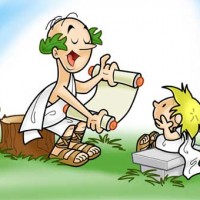Country: Germany
State: Schleswig-Holstein
District: Nordfriesland
Total: 5.78 km2 (2.23 sq mi)
Elevation: 5 m (16 ft)
Population: (2013-12-31)
Total: 103
Density: 18/km2 (46/sq mi)
Time zone: CET/CEST (UTC+1/+2)
Hooge (Danish: Hoge, Frisian: Huuge) is a municipality in the district of Nordfriesland, in Schleswig-Holstein, Germany.
The municipality is located on the island of Hooge – a small island off the coast of Germany. It is the second largest of the ten halligen in the Wadden Sea, after Langeneß. It is frequently called the Queen of the Halligen. The houses on the island are built on ten Warften.
The municipality (Gemeinde) Hooge also includes the uninhabited hallig Norderoog.
Settlements and geography
Hooge has 9 populated Warften:
Backenswarft
Kirchwarft
Ockelützwarft
Hanswarft
Ockenswarft
Lorenzwarft/Mitteltritt (double-terpen)
Volkertswarft
Ipkenswarft
Westerwarft
The Pohnswarft still can be found close to the shore of Hooge. The Pohnswarft is an unpopulated Warft which has been abandoned due to its unfavourable location. There is only a water gauge on it.
The small island of Hainshallig, located off the east coast of Hooge, may have once been connected to the island by a levee and belonged to a Hooge resident, but became flooded and sank in 1860.[sc:BR]
Artificial dwelling hill
An artificial dwelling hill (known as Terp, Wierde, Woerd, Warf, Warft, Werf, Wurt and Værft) is a mound, created to provide safe ground during high tide and river floods. These hills occur in the coastal parts of the Netherlands (in the provinces of Zeeland, Friesland and Groningen), in southern parts of Denmark and in Germany where, before dikes were made, tides interfered with daily life. They also occur in the Rhine and Meuse river plains in the central part of the Netherlands.
In Friesland
In the Dutch province of Friesland, an artificial dwelling hill is called terp (plural terpen). Terp means “village” in Old Frisian and is cognate with English thorp, Danish torp, German Dorf, modern West Frisian doarp and Dutch dorp.
Historical Frisian settlements were built on artificial terpen up to 15 metres (49 ft) high to be safe from the floods in periods of rising sea levels. The first terp-building period dates from 500 BC, the second from 200 BC to 50 BC. In the mid-3rd century, the rise of sea level was so dramatic that the clay district was deserted, and settlers returned only around AD 400. A third terp-building period dates from AD 700 (Old Frisian times). This ended with the coming of the dike somewhere around 1200. During the 18th and 19th centuries, many terps were destroyed to use the fertile soil they contained to fertilize farm fields. Terpen were usually well fertilized by the decay of the rubbish and personal waste deposited by their inhabitants during centuries. The largest terp, seen on the picture to the right, is still preserved.
Wierden in the province of Groningen
In the Dutch province of Groningen an artificial dwelling hill is referred to as wierde (plural wierden). As in Friesland, the first wierde-building occurred in 500 BC or maybe earlier.
List of artificial dwelling mounds
Place names in the Frisian coastal region ending in -werd, -ward, -uert etc. refer to the fact that the village was built on an artificial dwelling mound (wierde). The greater part of the terp-villages, though, have names ending in -um, from -heem or -hiem, meaning (farm)yard, grounds. There are a few village names in Friesland ending with -terp (e.g. Ureterp), referring not to a dwelling mound but merely to the Old Frisian word for village. The first element of the toponyms is quite often a person’s name or is simply describing the environmental features of the settlement (e.g. Rasquert (prov. Groningen) Riazuurđ: wierde with reed, where reed grows).
Some 1,200 terpen are known in Groningen and Friesland only, varying from abandoned settlements, mounds with only one or a few farmhouses, to larger villages and old towns. A few of them are listed below.
Friesland
Aalsum (West Frisian: Ealsum)
Bolsward (Boalsert)
Britsum
Cornwerd (Koarnwert)
Dokkum
Ee
Ferwert
Ginnum
Hegebeintum
Jannum
Jouswier
Leeuwarden (Ljouwert)
Metslawier
Wijnaldum
Groningen
Adorp
Bedum
Bierum
Ezinge
Feerwerd
Garnwerd
Godlinze
Holwierde
Leens
Middelstum
Niehove
Rottum
Saaksum
Spijk
Ulrum
Usquert
Wirdum
Northern Germany
Loquard (Ostfriesland)
Eckwarden (Butjadingen)
Itzwärden (Land Wursten)













